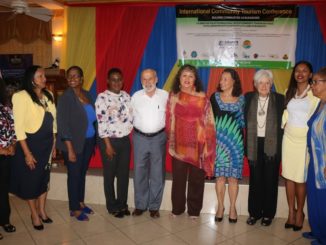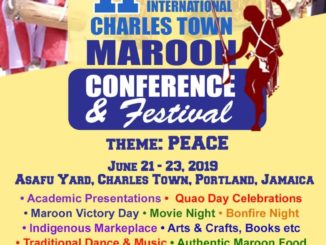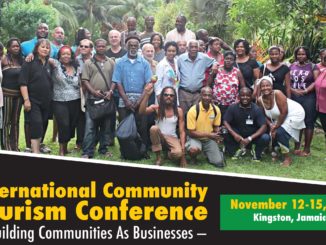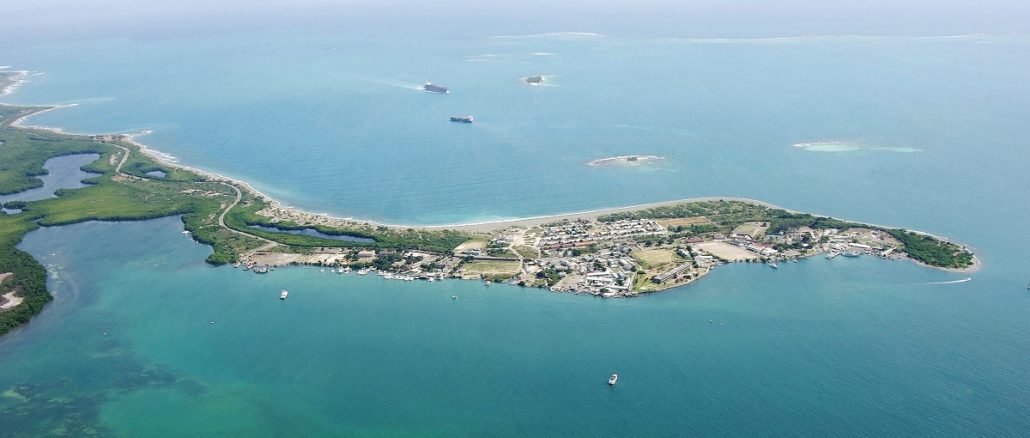
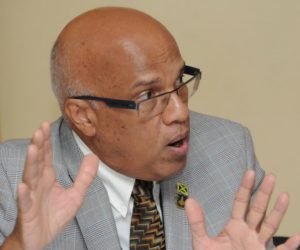
Port Royal is Jamaica’s diamond in the rough and we need to carefully plan and sustainably develop this jewel which will make us so proud we will be happy to share it with the world.
To begin with, we must first understand and commit to the concept of sustainable development which is focused on ensuring that the development, first and foremost, benefits the people of the community.
The first steps in sustainability planning and development, which were undertaken by the Port Royal Development Company (PRDCL) began with consultation and involvement of the people and the representatives of the people in the planning phase. The citizens association, the councillor, the member of parliament and the caretakers and other leaders in the community were integrally involved.
Secondly, before any construction and development started, the plans were exposed and shared with the people so they could study, ask questions and have inputs based on their valuable local knowledge for any adjustments and fine-tuning to be made.
Education, training and general human resource development is critical at the early stages of planning to ensure the people of the community are prepared to take advantage of the opportunities that will come from development and that they are not mere bystanders and the jobs and business opportunities are shared only by outsiders with little or no upliftment for the people in the community. PRDCL engaged the services of The Edutech Centre to guide the programme and established a Learning Centre in the Port Royal All Age School with the assistance of JSIF. At the time training programmes were implemented in Port Royal with twenty computers installed in the school so the children could be exposed to computers at an early age and adults could use them for learning in the evenings and on weekends.
Planning must always start from a position of taking careful stock of the state of the community in terms of the socio-cultural and economic environment. This assessment is critical to identify the key issues that need to be addressed. PRDCL employed the services of Dr. Ian Boxill and his team of researchers for the UWI to conduct a thorough assessment of the Port Royal Community and this formed the basis for developing our sustainable development plans.
Our assessment of the state of the Port Royal community twenty years ago identified several critical areas which needed to be addressed in order to sustainably develop Port Royal. These have only become more critical to be addressed if we are serious about sustainability and include:
- Sewage Disposal– this is essential as raw sewage is currently being sent into the harbour. If major development takes place this must be addressed for the entire community. This was planned and designed in detail by Wallace Evans and Partners on behalf of Port Royal Development Company. The plans are available in the UDC so there is no need to reinvent these though the plans may need to be reviewed to determine if the treatment system proposed should be adjusted given new technologies which have been developed since the plans were done;
- Water- the pipeline from the Airport to Port Royal was identified as inadequate and leaking and would need to be replaced and was planned for by PRDCL;
- Drainage- currently there are several open drains in Port Royal and again plans were developed on behalf of PRDCL for these to be addressed;
- Housing- the condition of the housing in the majority of the Port Royal Brotherhood area which is in the old part of the town nearer the harbour is in very bad shape and most of the units are falling apart. These were built like army barracks in 1952 after hurricane Charley and the majority of them are two-story blocks with rooms with single story blocks of bathrooms and kitchens behind them. This aspect of the development of Port Royal was examined in detail by architect Peter???? Francis. It was agreed that all the units should be rebuilt as modern apartments in the Architectural facade style of the 1690’s, keeping to two stories but partnering with the NHT to ensure the people of Port Royal would own their own apartments instead of renting from the brotherhood. The phased redevelopment of the Port Royal housing stock was integral to the PRDCL plans with ownership by the people of their own homes essential;
- Health Centre- currently there is a need for a Type 3 Health Centre in Port Royal and this was another critical element in the PRDCL plans as the health of the people of the town and the ability to handle emergencies for visitors is critical for sustainable development.
- Police station– the current police station was examined and it is in need of modernization. It also should be relocated from the prime waterfront location it currently occupies to an area closer to the entrance/exit of the town. This was planned for and was a part of the PRDCL planned development.
- Roads, Sidewalks and Landscaping- were all recognized as needing upgrading. Since the sewage would require excavating most of the roads, it was seen as an opportunity to redo the road surfaces and have proper sidewalks and landscaping, including lighting, to resemble the lamps of the 17th century.
- Archaeology of Port Royal- was recognized as an important asset to be preserved therefore Sonar surveys of the Port Royal Harbour area by Bert Instruments and Radar surveys of the land in Port Royal were undertaken by PRDCL and an Archaelogoical Impact assessment was completed and a report produced.
- Port Royal Protected Area was also recognized as important to preserve, so an Environmental Impact Assessment was done by Environmental Solutions Ltd. on behalf of PRDCL to ensure the natural environment of Port Royal was protected.
- Attractions- an Interpretive Master Plan was completed by a team led by museologist Dr. Leslie Patten from Canada supported by local experts Dr. Patrick Bryan, historian; Mr. Karl “Jerry” Craig, visual arts and crafts advisor for the modern and historic period; Mr. Roderick Ebanks, collections expert and Port Royal historian and a representative of the Jamaica National Heritage Trust; Mr. Peter Francis, architectural historian; Ms. Olive Senior, specialist in cultural milieu, dance and literature; and Dr. Barry Wade, natural history expert; on behalf of PRDCL which included the existing Fort Charles and St. Peters Church adding a Museum in the Naval Hospital, an Earthquake attraction, the Naval Dockyard area, the women’s Gaol, and an underwater Museum all of which were conceptualized and planned by PRDCL
- Shopping, Restaurants & Sidewalk Cafe’s– were also all planned and preliminary Architectural plans for the entire town and its development were completed by Marvin Goodman and Associates in collaboration with the Internationally acclaimed Jerde Partnership out of California. A detailed Retail Plan was also completed by another highly acclaimed international planning team from Thomas Consultants who have designed many major resort communities worldwide.
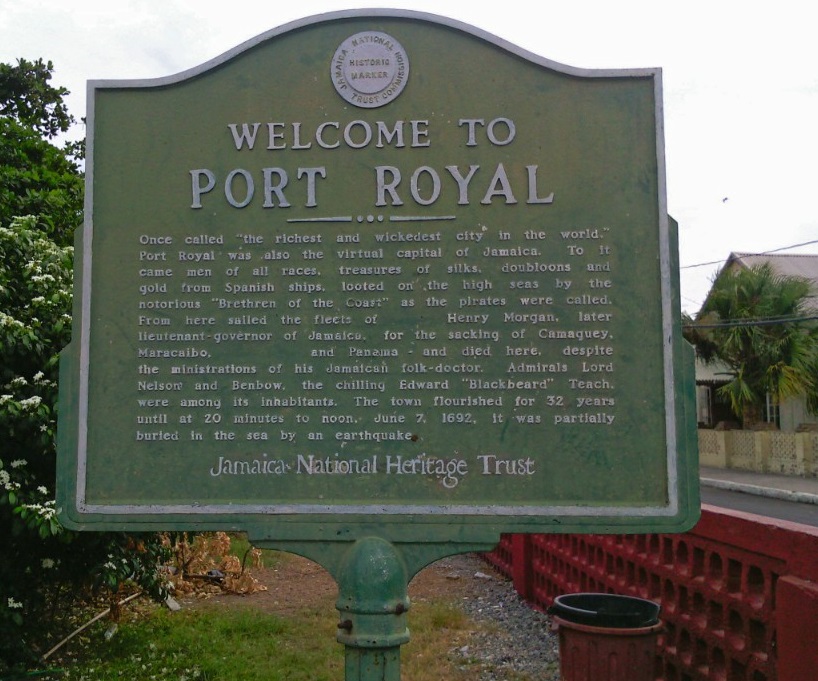
In the final analysis, PRDCL went about planning and designing the development of Port Royal in a comprehensive way with the people of the town as the focus of the development.
Over US$5 million was invested and these plans should not be discarded but reviewed and revised where necessary to take advantage of new approaches and technologies. It would be a colossal waste of both Jamaican taxpayers investments via the GOJ and the Private sector pioneering investors if these plans were to be ignored.
I rest my case.
Robert Stephens, Director of Port Royal Development Company

